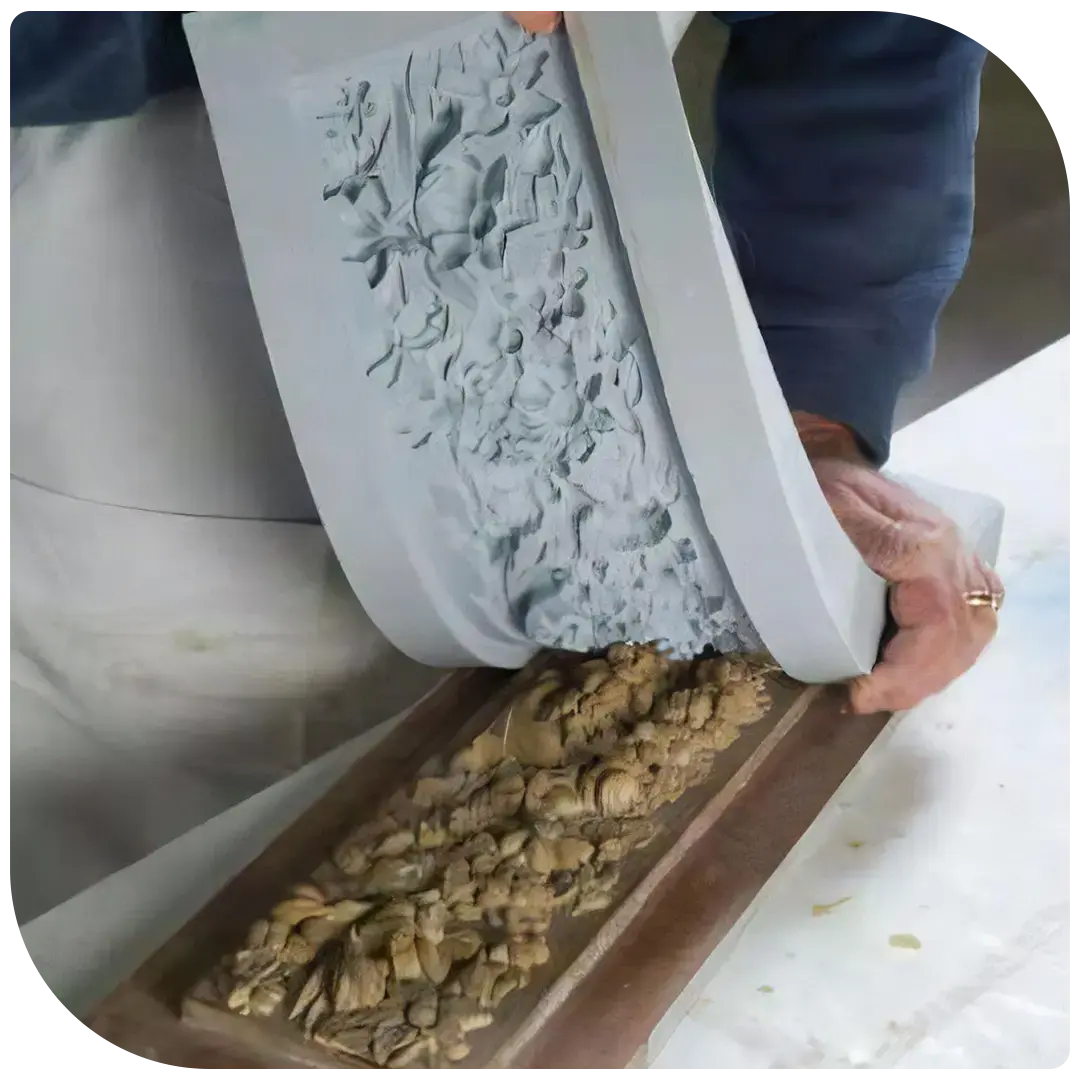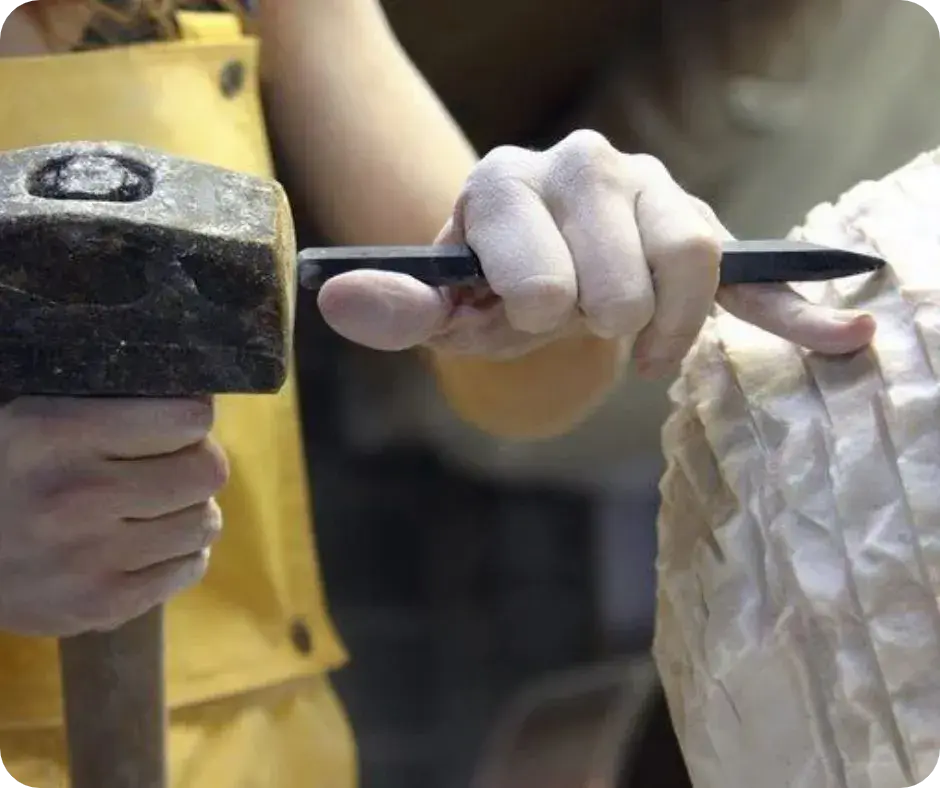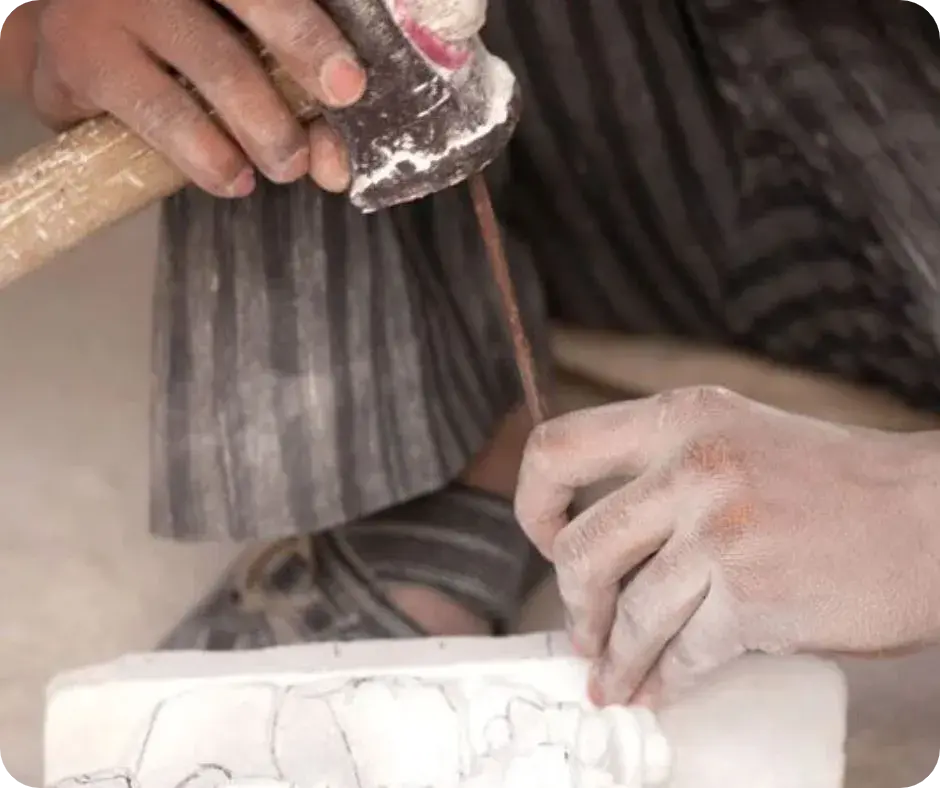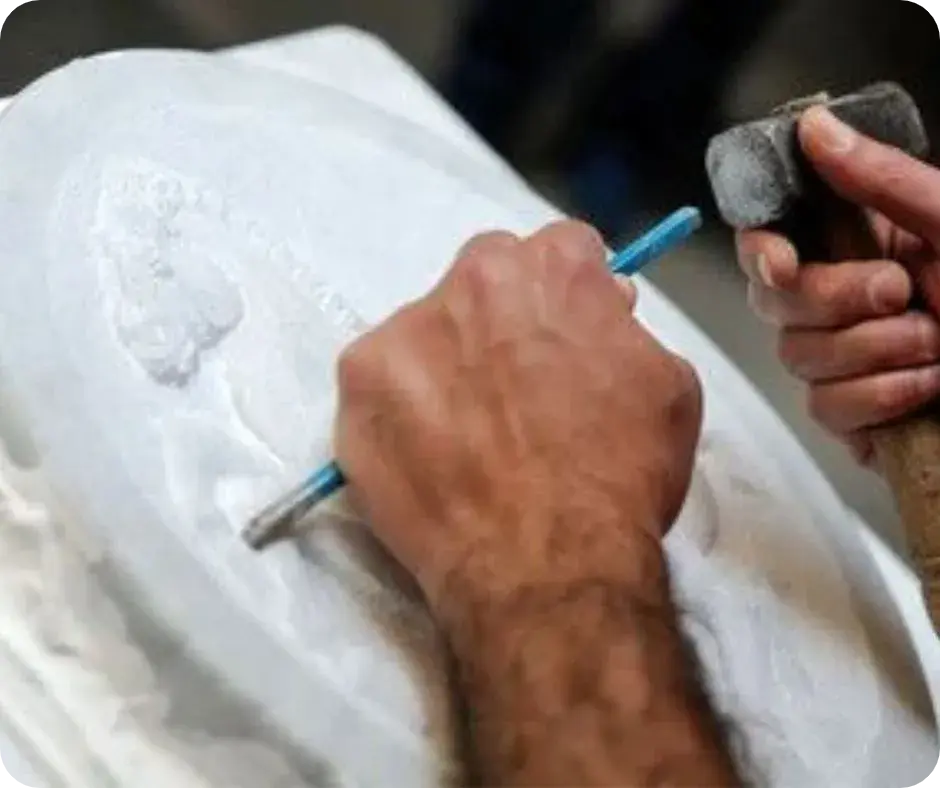ITEM DETAILS :
SPECIFICATIONS : WHITE MARBLE STATUE
DIMENSIONS : 32 CM HEIGHT X 24 CM LENGTH X 11.5 CM WIDTH
WEIGHT : 7.80 KG
HANDMADE
ORIGIN : India
POSTAGE & HANDLING : Free
EXCHANGE : Within 7 Days After Delivery
RETURN/REFUND : Read our Return Policy
A seated Ganesha composition, bearing perfect resemblance to the traditional iconography of Shiva-Parvati’s son. Borrows from minimalism, in terms of both simplicity and proportion; yet there is a flourish about it. Solid white colour featuring the natural texture of pure marble.
The crowned elephant head, seemingly suspended mid-air. Implements of the posterior arms connected to the same by a block of marble that, by dint of the sculptor's skill, pleasingly fits into the composition. All four hands resting on the knees of the limbs gathered closely together.
Barely-there yet lifelike serrations on the insides of Ganesha’s ears and the volumes of His dhoti. Characteristic stone engravings on the crown. Poised on an unassuming plinth that projects an impression of a monolith.
Marble Mastery Unveiled: The Artisan's Symphony in Sculpting Timeless Beauty
Marble is a soft and delicate metamorphic rock derived from limestone. It is composed mainly of recrystallized carbonate minerals. The appealing appearance of marble gives rise to the making of beautiful sculptures and statues. Jaipur city of Rajasthan, India, is considered the capital of marble carving where various marble idols of Hindu Gods and Goddesses are made. These magnificent statues are carved by skilled sculptors out of the purest white marble. The slight softness of white marble makes it easier to be carved and chiseled into any desirable form or shape. Another impressive feature of marble is that the calcite has a low refractive index that allows light to penetrate the stone before getting scattered out. This results in bringing a translucent appearance and luster to the marble sculpture. This is the reason why most sculptors prefer to work with marble for sculpting life-size statues that require intricate details, evoking a certain realism to the work.
There is a detailed or step-by-step process of developing the desired structure of a sculpture from marble stone. These steps are:
1. Clay mould
Most sculptors prefer to sculpt a preliminary model out of clay or wax to translate its complex and intricate details into the final stone sculpture with the use of calipers or a pointing machine. The plasticity of the clay mould helps sculptors capture the success of the final sculpture before carving the stone. The clay is moulded into the desired shape or form and this acts as a rough

2. Roughing out
The second step of carving or sculpting is to remove large portions of unwanted marble stone. This task is done by using a special tool known as a point chisel. The pointed end of this tool is useful for splitting the large stone and removing big chunks that are not wanted. Usually, a mallet (a tool similar to a hammer) is used to transfer energy through the chisel to shatter the stone evenly and accurately.

3. Refining the figure
Once the sculptors have determined the general shape of the sculpture, a toothed chisel or claw chisel is used to refine the stone. These tools create parallel lines in the stone to add texture to the figure. During this stage, the rough block of stone has now changed into the general shape of the sculpture.

4. Adding the details
The sculptor is now ready to carry out detailed work to develop a more refined form of the sculpture. Tools such as rasps and rifflers are then used to enhance the shape into its final form. These tools finely create details such as frills or folds of clothing or locks of hair.

5. Polishing
This is the last step in marble sculpting in which the sculptor uses materials such as sandpaper to bring out a natural sheen to the sculpture. The sandpaper is rubbed against the surface to make it smoother and flawless. Sometimes, tin oxide is also used to make the sculpture appear glossy and more translucent.

Marble sculptures are highly durable and can last for many decades if maintained and taken care of properly. They are also extremely weather-resistant and therefore, can be kept outdoors or indoors. The exquisite beauty of marble statues elevates the aura of the space and emanates positivity all around.




